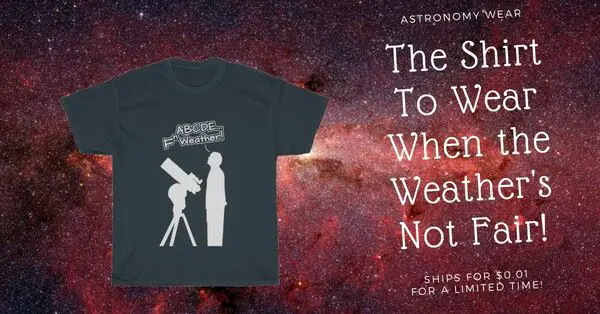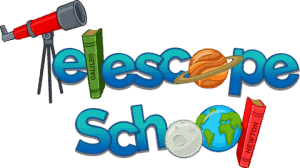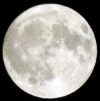One of the biggest surprises that beginner astronomers have is when they find that the view they are seeing through their telescope is upside down or backward.
To correct upside-down viewing equipment known as a Diagonal can correct the image and turn it right-side up. However, this will flip (mirror) your image from left to right. There are special diagonals, to correct the image as to how you would really see it called Erect-Image Prism diagonals and are used in the same manner as regular diagonals.
For those that are using a refractor or a Cassegrain style telescope, you can use a Diagonal to correct the image and turn it right-side up. However, this will also flip your image backward from left to right.
As mentioned above, special diagonals, called Erect-Image Prism diagonals can correct the vision as you would really see it.
My problem was…I found that I needed to not lose orientation of the object, say the moon, to easily navigate to specific craters.
What Erect Prism Diagonal I Used
You may find you can use a standard diagonal, or you may not even need a diagonal at all. However, if you are like me, I found this one at Amazon to be quite useful. If you want to see it, I had purchased it to see if it would help me out… here is the link.
I just found it easy to use and orientate as I was relearning my telescope. Especially when the grandchildren were over, they lost interest a little quicker I thought before I got the erect image prism diagonal. But it may just have been me getting quicker at set up as well?
Here is the one I am saving up for, now that I know that a Image Prism Diagonal improves my viewing time. The Orion Deluxe Image Prism Diagonal.
Why You May Not Need To Correct
In astronomy, vertical orientation is not as necessary due to our concept of up and down are just relative to the direction in which gravity is working on us. In space, there is no up or down.
Also, seeing astronomical objects upside down would not really be a big deal. You might not even notice it since you don’t see them right-side up anyway. Although, objects here on Earth may need that grounded feeling when viewing.

Landscape viewing could make you motion sick from looking in and out of the telescope? I am not too queasy, but my wife gets seasick in a paddle boat, so I am sure she would not like the topsy-turvy viewing.
Why do Objects Appear Upside Down or Backwards?
At first, you may think that there is a specific purpose on why the telescope is designed to be this way. But the truth is, every telescope (whether a refractor, reflector or compound style) and even cameras produce inverted images.
This is because mirrors and lenses just work that way. In fact, our eyes actually do the same thing. We actually see the world upside down! Our brain inverts the image so that we can see the world as it actually is.
If This Can be Remedied Using a Diagonal Why Not Do It All the Time?
Using diagonals and other optics to correct the images actually limits the amount of light that the telescope can gather from the night sky. Because of this, astronomers learn and practice to work with inverted images and view astronomical objects upside down.
Also, adding another optical device on the telescope causes additional aberrations and distortions to the view, which can become a problem as well.
Does it Happen On All Telescopes?
The orientation of the images that you will see on your telescope depends on the type of telescope that you are using:
- Reflector telescopes – this type of telescope produces an upside-down image. Unfortunately, there are minimal ways to correct this for this type of telescope.
- Refractor and Compound telescopes – these telescopes produce an image that is both upside-down and backward from left to right.
Do Finderscopes Produce Upside Down Images?
This depends on the type of finderscope that you are using with your telescope. There are basically two kinds of finderscopes:
- Achromatic – this type of finderscope works similarly as a telescope, but is only much smaller. They use lenses to magnify their view of the night sky. Because they also use a lens, they then, also produce an image that is upside down. This can cause some problems in the beginning when finding objects in the night sky, but it can be remedied by merely reading your star chart or any kind of map upside down.
- Reflex Sight – this type of finder scope does not use lenses to magnify its view and therefore, gives a straight through observation of the night sky with no magnification. Because of this, this type of finder scope does not produce an inverted image. This type of finder scope has circles in the reticle to show you which part of your view matches the field of view of your eyepiece. The most famous and best-selling example of this is the Telrad finder. You can check it out on Amazon by clicking here.
Do you Need to Invert the Image for Astrophotography First?
For astrophotography, an upside-down photograph can easily be corrected using photo editing software such as Photoshop. Actually, most free software will allow you to flip or invert an image. Canva is Free to use and powerful for all things, from business to hobbies…Check it out here.
So, the answer is no. Get the best image you can and then just flip it around to your visual preference with software.
Need More?
Seeing upside-down images on your telescope maybe disorientating at first, but should not in any way discourage you from pursuing astronomy. Most celestial objects, which side is up or down won’t even matter anyway. When using star charts and maps, you can just read them upside down to match the view of your telescope.
This website offers a lot more articles that can help you with any problem that you may have in pursuing astronomy as a hobby. Feel free to browse this website to find more informative articles that will help you learn more about this beautiful field of astronomy.
I recommend these articles for you next, check them out…
Telescope Filters, Which Ones to Use and Where
The 10 Best Barlow Lenses, 2″ and 1-1/4″ Why I’d Buy Them
Telescope Magnification Guide, Where Does it Get Blurry
What to Look for When Buying a Used Telescope
Will Montgomery explains why your telescope flips the Moon — and how simple changes or accessories can restore a right-side-up view.


